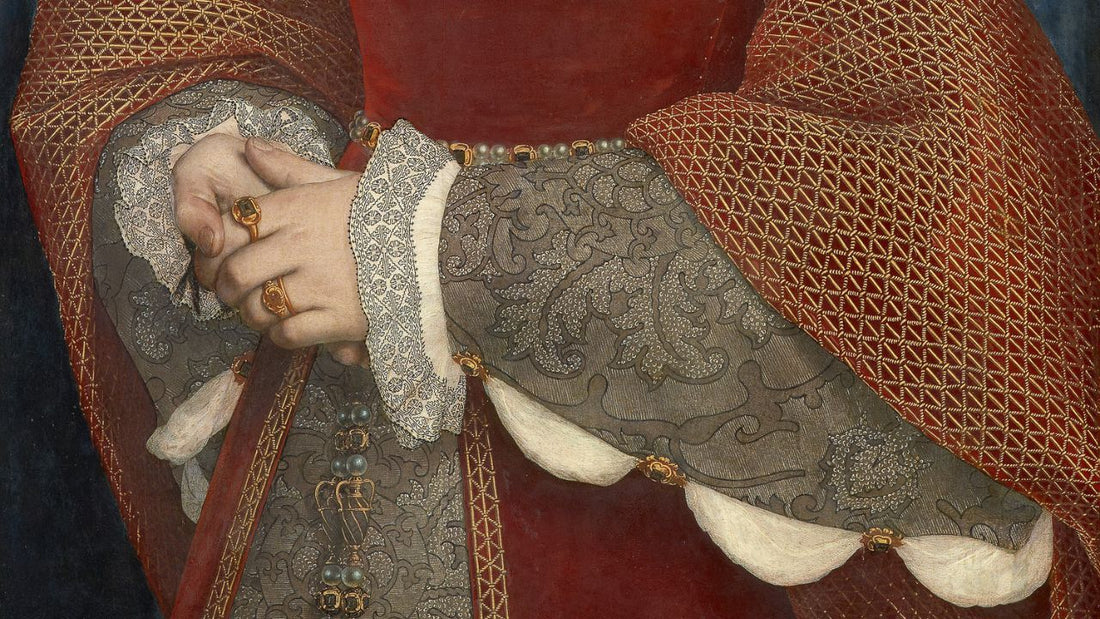
The History of Pattern Books and Embroidery from the 1500s to the Late 1800s

Embroidery, with its intricate designs and delicate stitches, has been a cherished art form for centuries. From the 1500s to the late 1800s, the practice evolved significantly, influenced by the availability of pattern books and the sharing of designs among embroiderers, particularly young women. This blog explores the history of embroidery during this period, focusing on samplers, cross-stitch, and other types of needlework, and delves into the role of pattern books in shaping this timeless craft.
The Early Days of Embroidery and Samplers

(Jane Bostocke Sampler that she stitched for the arrival of her cousin Alice in 1598, it lives at the V&A museum)
Embroidery has ancient roots, but it wasn’t until the 16th century that samplers became prominent in Europe. Samplers were pieces of fabric where young girls practiced their stitches, often including alphabets, numbers, motifs, and decorative borders. These early samplers served both as educational tools and as records of stitches and patterns for future reference.
The earliest known European sampler, created by Jane Bostocke in 1598, is housed in the Victoria and Albert Museum in London. It features floral motifs, decorative borders, and commemorative text, reflecting the intricate designs of the Renaissance. These pieces often featured geometric patterns, floral motifs, and religious symbols. The designs were typically passed down within families, copied from existing samplers, or inspired by local traditions and motifs.
In the United States, the earliest known sampler was made by Loara Standish around 1640. Loara was the daughter of Myles Standish, a military leader of the Plymouth Colony. Her sampler, stitched with silk threads on linen, features intricate patterns and is an excellent example of early American needlework.
(there is no proper image of the original sampler so I am showing similar ones)
The Emergence of Pattern Books
The advent of the printing press in the 15th century revolutionized many aspects of life, including the dissemination of embroidery patterns. The first known printed pattern book for embroidery is "Für alle frommen Frauen" (For All Pious Women) by Johann Schönsperger, published in Augsburg in 1524. This book featured a collection of woodcut patterns, primarily for lace and embroidery.
Following this, several other pattern books emerged across Europe, particularly in Italy, Germany, and France. These books were often small, portable, and affordable, making them accessible to a wide audience. They included a variety of patterns, from simple borders to elaborate floral and geometric designs, catering to different skill levels and tastes. However, due to the cost of printing and distribution, these books were initially affordable only to the wealthier classes, such as the nobility and affluent merchant families. As printing technology advanced and became more widespread, middle-class families also gained access to these valuable resources.

(Usage of sampler embroideries, Hans Holbein Painting)
Types of Embroidery and Patterns
During the 16th and 17th centuries, counted-thread embroidery techniques like cross-stitch gained popularity. Cross-stitch patterns were relatively easy to replicate and allowed for the creation of symmetrical and intricate designs. Whitework, blackwork, and redwork were also popular styles, each with its unique characteristics and cultural significance.
By the 18th century, samplers had evolved from simple practice pieces to elaborate works of art. They often included verses, family records, and intricate decorative motifs. Young girls would create samplers as part of their education, demonstrating their needlework skills, literacy, and moral upbringing.
The Role of Pattern Books in the 18th and 19th Centuries
In the 18th and 19th centuries, the popularity of embroidery pattern books continued to grow. Publishers like Ackermann’s Repository in England and D.M.C in France produced beautifully illustrated books and magazines featuring a wide range of patterns. These publications were highly influential, spreading trends and standardizing certain styles across Europe and America.
Pattern books during this time included not only traditional motifs but also contemporary designs reflecting the tastes of the Victorian era. Floral patterns, pastoral scenes, and intricate borders were common. The industrial revolution also played a role, with advances in printing technology making pattern books more widely available and affordable.

Sharing and Copying Designs
Embroidery was often a communal activity, with women sharing patterns and techniques within their communities. It was common for young girls to copy designs from their own or others’ samplers, creating a rich tapestry of shared motifs and styles. Family samplers were treasured heirlooms, passed down through generations, and served as a source of inspiration for new works.
To copy patterns from books, women employed several techniques. One common method was to use tracing paper or fine, translucent fabric to trace the designs directly from the pages. Alternatively, they might use the prick-and-pounce method, where the pattern was pricked with tiny holes along the design lines and then dusted with a fine powder, leaving a dotted outline on the fabric beneath. Another technique involved freehand drawing, where skilled embroiderers would replicate the patterns by eye, relying on their practiced precision and attention to detail.
Additionally, pattern books were frequently exchanged among friends and family members. The portability of these books made it easy for designs to spread across regions, leading to the blending of different cultural influences in embroidery styles.
Initially, pattern books were indeed more accessible to the wealthy, such as the nobility and affluent merchant families, due to the high cost of printing and distribution. However, as printing technology advanced and became more widespread, the cost of producing books decreased, making them more affordable for the emerging middle class. By the 18th and 19th centuries, pattern books had become accessible to a broader audience, including middle-class families and skilled artisans. Additionally, the communal nature of embroidery meant that even those who couldn't afford to purchase their own books often had access to patterns through sharing within their communities.

Final Thoughts
The history of embroidery from the 1500s to the late 1800s is a testament to the enduring appeal of this art form. Pattern books played a crucial role in the evolution of embroidery, providing a source of inspiration and standardization for generations of needleworkers. Whether through meticulously copied samplers or shared pattern books, the designs of the past continue to influence and inspire modern embroidery enthusiasts today.
Embroidery remains a beautiful and meaningful craft, connecting us to the rich history and creativity of those who came before us.
I am adding two of the original old patterns books to the vault. They are in public domain so I am able to share them with you. Just click the links below (the colored words).
I hope you enjoyed this post!
hugs,
Birgit

Beautiful Blackwork Embroideries

(Paintings by Hans Holbein. He has the best collection of garments of that time showing the intricate embroideries)

19 comments
Thank you so much for telling us about such wonderful needlework. The history is something I love to read about. You do a great job.
Lovely photos with such informative history. Thank you!
Lovely photos with such informative history. Thank you!
This post has been a joy to read. Thank you!
Fascinating to learn the history. Thank you so much. You could sell this info on a flyer when we order and it would be wonderful. Thank you.